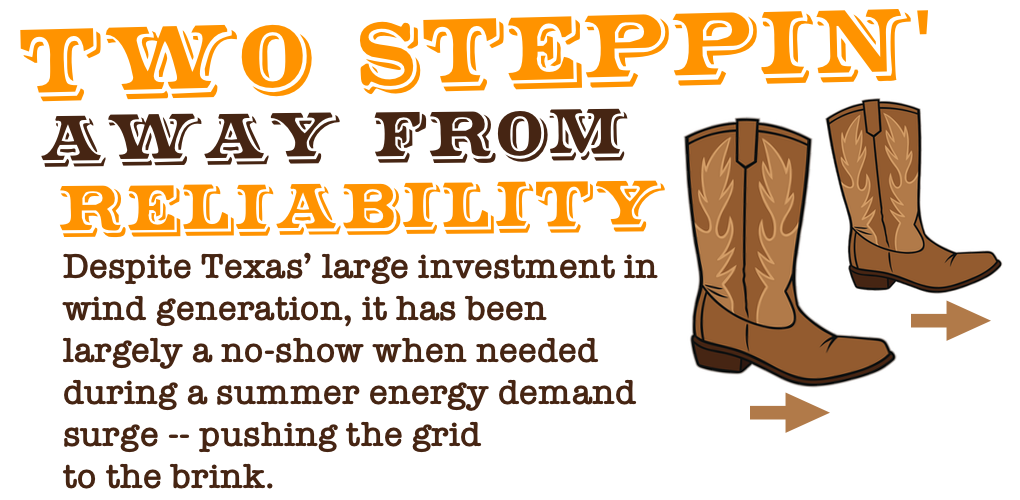
The Texas Reliability Two Step
The Texas grid has been pushed to its limits this week. Demand for power has exceeded supply, prices have soared and energy experts and consumers alike have waited with bated breath for rolling brownouts or blackouts.
On Monday, electricity demand hit a new record and electricity prices spiked to $6,500 per megawatt hour. On Tuesday, things got even stickier. The reserve margin of remaining power capacity shrunk to just 2 gigawatts in the early afternoon, less than 3% of total demand on the system, forcing the grid into emergency operation. The price of electricity surged more than 49,000% and hit the market cap of $9,000 per megawatt hour. That’s not a typo. Consumers were begged to conserve power. The system was on the very precipice of being overwhelmed. The threat of rolling outages and no AC for millions of families during triple digit temperatures was shockingly imminent.
How could this happen with all of the “cheap” renewables that have been integrated onto the grid? As Bloomberg reports, that’s exactly how it happened: “The unprecedented rally highlights how volatile the Texas power market has become as coal-fired power plants… continue to shutter. Texas’ grid operator has been warning for months that plant retirements and increasing electricity demand has left it with slim supply margins.”
At the heart of the problem is a market design that has thrown caution to the wind in search of marginally less expensive power. Fuel security, grid reliability and resilience have taken a back seat. For the better part of two years, as essential baseload power plants – including nearly 5,000 MW of coal capacity – have been forced into early retirement due to market conditions that could not support their continued operation, reliability experts have warned of an approaching crisis.
Texas has traded essential baseload capacity for heavily subsidized wind power. Now boasting nearly 25 gigawatts of wind generation, Texas has the largest wind capacity of any state. That increasing exposure to variable power hasn’t come without challenges. August, the month for peak electricity demand, is case in point.
Extreme heat and humidity are not conducive to strong wind. We’ve all felt it. A stifling hot day with oppressive humidity when even the faintest breeze would make all the difference, but nothing is stirring. Despite the state’s large investment in wind generation, it has been largely a no-show when it was needed most. Bloomberg reported that wind power generation has plunged for three straight days.
Renewable advocates have pointed to solar power as the perfect compliment to Texas’ summer wind woes but solar may not be the cure-all those advocates are counting on. Solar generation peaks at midday and ebbs into the afternoon just when power demand reaches its peak. If subsidized solar additions push even more baseload power into early retirement, Texas will again trade dispatchable generation for variable power that produces electricity not when needed but when it can. That’s the last thing ERCOT needs to maintain reliability.
Recent reliability challenges and price volatility show that our electricity markets are increasingly leaning on guesswork and hope, rather than on reality-driven strategy. Instead of doubling down on technologies that pose reliability challenges, ERCOT, like several other regional grids, needs to rethink its rate structures to properly value baseload, fuel-secure, dispatchable power that is the very foundation of grid reliability. Keeping essential coal capacity running is an important piece of a thoughtful, all-of-the-above energy strategy that also includes renewables. It’s past time to admit the obvious: the market is failing to provide the incentives needed to maintain a reliable, resilient flow of power. Texas shouldn’t wait another minute to fix what is clearly broken.
- On August 14, 2019
